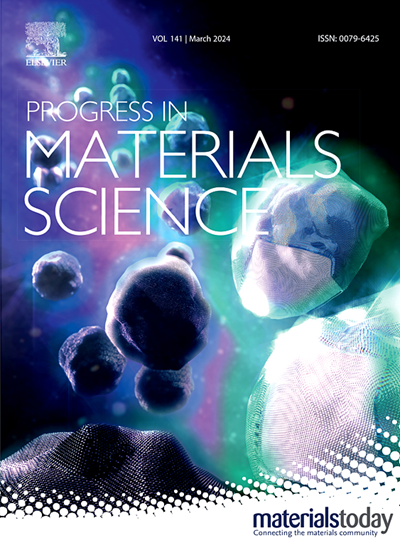冷冻合成功能材料:基础、进展和应用
IF 40
1区 材料科学
Q1 MATERIALS SCIENCE, MULTIDISCIPLINARY
引用次数: 0
摘要
冰模板,或者更广泛地说,冷冻加工和合成,是一种高度通用的方法,可以制造各种多孔、纳米结构和功能材料。这些材料在工程、储能、热管理、波屏蔽、生物医学应用、环境修复和催化反应等领域得到了广泛的探索。近年来,这一课题的研究不断深入,吸引了各个研究领域的科学家们的大量研究。本文首先介绍了制备冰模板材料的冷冻工艺和冷冻干燥的关键方面和关键参数。了解和控制冷冻过程对于许多其他过程是必不可少的,例如冷冻保存,冷冻脱盐,尽管它们不在本综述中涉及。其次是通过冷冻和冷冻干燥生产生物药品。然后,我们演示了如何将冷冻过程应用于制备各种多孔和纳米结构材料,并根据材料的形态进行组织。我们进一步描述了如何通过冰表面的冷冻浓度和催化特性来实现冷冻反应和功能材料的合成,特别是二维材料。然后回顾了冰模板材料在不同领域的应用,重点介绍了冰模板材料的最新进展,以及冰模板材料的特点和冷冻干燥如何提高这些应用中的性能。这一全面的审查是完成的结论和提出的挑战,推动这一研究领域向前发展。本文章由计算机程序翻译,如有差异,请以英文原文为准。
Freeze-enabled synthesis of functional materials: fundamental, progress, and applications
Ice-templating, or more broadly, freezing-enabled processing and synthesis, is a highly versatile approach to fabricating a wide range of porous, nanostructured, and functional materials. These materials have been extensively explored in the fields of engineering, energy storage, thermal management, wave shielding, biomedical applications, environmental remediation, and catalytical reactions, etc. The research in this topic has been continuously going strong and indeed has attracted intensive efforts from scientists across diverse research fields in recent years. In this review, we first describe key aspects and key parameters of freezing process and freeze-drying for the preparation of ice-templated materials. The understanding and control of freezing process is essential for many other processes, e.g., cryopreservation, freeze-desalination, although they are not covered in this review. This is followed by the production of biopharmaceuticals by freezing and freeze-drying. We then demonstrate how the freezing process can be applied to prepare a wide range of porous and nanostructured materials, organized by the materials morphologies. We further describe how freezing reaction and the synthesis of functional materials, particularly 2D materials, are enabled via freeze-concentration and catalytic property of ice surface. The applications of the ice-templated materials in diverse fields are then reviewed, with a focus on recent progress and how the ice-templated features and freeze-drying enhance the performance in these applications. This comprehensive review is completed with a conclusion and proposed challenges in moving this research field ahead.
求助全文
通过发布文献求助,成功后即可免费获取论文全文。
去求助
来源期刊

Progress in Materials Science
工程技术-材料科学:综合
CiteScore
59.60
自引率
0.80%
发文量
101
审稿时长
11.4 months
期刊介绍:
Progress in Materials Science is a journal that publishes authoritative and critical reviews of recent advances in the science of materials. The focus of the journal is on the fundamental aspects of materials science, particularly those concerning microstructure and nanostructure and their relationship to properties. Emphasis is also placed on the thermodynamics, kinetics, mechanisms, and modeling of processes within materials, as well as the understanding of material properties in engineering and other applications.
The journal welcomes reviews from authors who are active leaders in the field of materials science and have a strong scientific track record. Materials of interest include metallic, ceramic, polymeric, biological, medical, and composite materials in all forms.
Manuscripts submitted to Progress in Materials Science are generally longer than those found in other research journals. While the focus is on invited reviews, interested authors may submit a proposal for consideration. Non-invited manuscripts are required to be preceded by the submission of a proposal. Authors publishing in Progress in Materials Science have the option to publish their research via subscription or open access. Open access publication requires the author or research funder to meet a publication fee (APC).
Abstracting and indexing services for Progress in Materials Science include Current Contents, Science Citation Index Expanded, Materials Science Citation Index, Chemical Abstracts, Engineering Index, INSPEC, and Scopus.
 求助内容:
求助内容: 应助结果提醒方式:
应助结果提醒方式:


